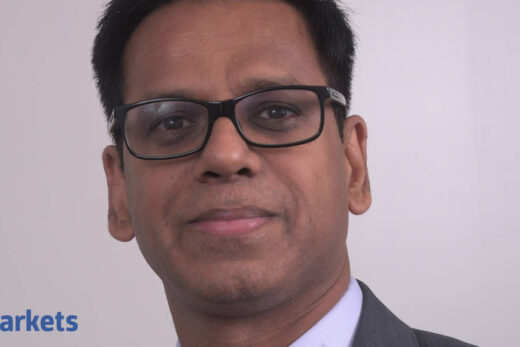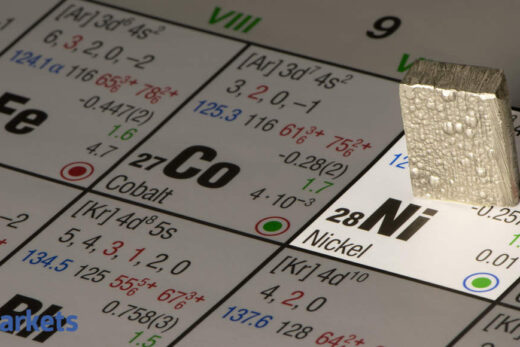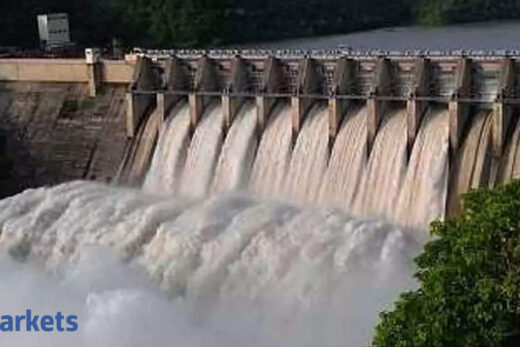What kind of recovery do you see for Honda and for the company’s stock?
It is too early to comment on the kind of shape it is going to take. I do not belong to the stock exchange and the realties market, but yes at the same time I know there are expectations by the investors from the OEMs. It is not an apple-to-apple comparison with the wave one, we have started opening up now and we will see a V-shape recovery. We need to watch a little more.
The network has started opening up and we are seeing the retail momentum. However, moving forward in this time, since more powers have been given to the local administration to go for announcement of lockdowns and the various curbs on the economic activities, I would say that another one or two months will really start giving some shape and trend. So, may not be a V-shape recovery. Recovery for sure that is happening and we are seeing that.
Are you seeing pain in the rural belt of the market which aided recovery same time last year?
This time we are seeing more spread and penetration of the impact of virus and the pandemic up to the hinterland and at the same time there are some strong attributes and fundamentals of the rural economy in terms of the agriculture produce. Recently, the big announcement on the MSP for all mandated kharif crop by the central government, it is on the higher side and in some crops it is much higher. That on one side is a positive aspect, but at the same time rural economy this time has been caught unaware in terms of preparedness for the pandemic.
Unfortunately, we have limited resource for medical facilities and infrastructure in the rural areas and also the fact that they had not faced the wave one, they were not prepared to the extent the urban and semi-urban had been having gone through the wave one impact last year. Rural is definitely impacted and we saw the numbers of even the tractor industry last month. It slowed down a bit because last two years tractors have been doing extremely well in the rural areas.
These are certain things, they are plus, they are minus. Which is going to be on the heavier, once we move forward, we need to see that closely. But for sure, rural has been impacted and the recovery which rural has shown or the way it has supported the industry in the last year during the wave one of the pandemic, it may not have that similar support for the industry.
As far as Honda is concerned, since we have only up close to 25% of our business coming from the rural, the impact will be lower. Last year since urban was impacted more, we had more impact as a brand and this year if rural gets impacted more, it will have a lower impact on us because our dependency on rural in our total business is comparatively lower.
What could snap us out of this slump? Would you say maybe vaccinations or something like the festive season later this year?
Couple of factors we need to watch closely. One, since this time the wave came during the marriage season, especially in the cow belt area or we call the northern and central belt of India, where there is an increased sale of two wheelers especially during the marriage season. This time the lockdowns have been very severe and for an extended period of time we did not see much celebrations in the rural areas in terms of marriage.
They are already postponed to the next season; around the festival season when the marriages will happen. If we do not have the next wave coming in, it is expected we may see some pent-up demand of this marriage season being postponed to the next marriage season which will be around during winters for 2021. That is one positive aspect we are looking forward to as an industry insider.
Second is the sentiment which has started building around with the momentum of the vaccination drive. Especially now, the Centre is going to drive this vaccination arrangements across the country so there are positive sentiments. More and more people have started coming in and going ahead for the vaccination. Earlier, there have been a lot of anxiety around whether to go or not to go, but this time we are seeing that more people have started coming forward for getting the vaccination. We hope the monsoons this time again for a consecutive third year is going to be a normal monsoon which IMD has already shared the forecast on. Kharif crop MSP on the higher side, good monsoons, some pent-up demand may be visible down the line.
These are the aspects which we need to closely watch. At the same time, there are some headwinds like the retail finance still has not contributed to the industry the way it was expected. In fact, it has gone down by almost 10% in terms of contribution to the industry from 43-44% to 39-40%, only the two wheelers which are being sold on the retail finance. So, we expect more support from the retail finance company and the banks who are into retail financing of the two-wheeler industry which may also add some momentum to the industry in next few months to come.
How many of your dealerships are open currently? How are the sales region wise and how far are they currently from pre-Covid levels?
Since this time the lockdown is not a national lockdown, so from planning and strategic point of view it was much more challenging, not only for Honda, but I would say for all the OEMs because supply chains were also impacted. Sometimes your vendors or suppliers were in a particular state and they have to supply in a factory which happens to be in another state. But the factory activities have been allowed to carry on by following the respective Covid protocols as directed by the local administration, so we were able to somehow manage the supply chains. And in terms of the lockdowns, that also moved differently and behaved differently.
Initially, we saw much more spike in the western region, as we all know starting from the Nagpur region of Maharashtra which was closed down almost for two-and-a-half months and then coming to Mumbai belt area, then spreading into the southern region and then lately to the east. In the month of May, more of south and east region of the country was open for the economic activities. There were dealers that were open in those areas and we were seeing the retail sale momentum. Moving into the latter half of May, the spread has been more towards the southern region and going down in the western region and central and northern part of the country. So, we saw more lockdowns being announced in the southern region.
Today, if we take the status in the first week of June, we have almost eight states which are under lockdown and the maximum states are from the southern region. Three states like Karnataka, Kerala as well as Tamil Nadu are still under lockdown and hardly any economic activity especially related to two-wheeler business or auto business is allowed. In the eastern regions, bigger states like Odissa which is again under lockdown and three northeast states like Tripura, Mizoram and Arunachal Pradesh are still under lockdown. So, this time the dynamics have changed.
Earlier, south and east were driving the retail sales momentum for the industry and I would say now in the month of June, it is the western region and central part of the country which is driving the business. So, dynamics are changing on a weekly basis. That remains a challenge for all the marketers to closely watch and change their moves on a week-to-week basis. Even from production point, the bigger challenge is you may agree that the models which we sell in the country, the demand is not homogeneous. Once some of the models do very well in the eastern part of the country, they are not the same models or the colours which are popular in the southern part of the country or the central part of the country.
You have to change this mix at a very quick pace. Your production, backend and supply chain need to be readjusted accordingly to cater to such change in dynamics of market demand. So, that remains a challenge and we are in close liaison with our production teams and purchase teams to our best to meet such challenges of the change in shifts and demands in the market across the country.
What is the demand scenario for you in terms of the waiting time period? What is your take on the premiumisation trend which one can see in India? What kind of launches do you have planned and what is the strategy for the premium segment going forward?
I would say we are all part of this big market and doing our best to increase the segment size and volume and there is enough potential for everyone to survive and expand their business. That is why Honda made an entry last year into the mid-size displacement of engine in terms of motorcycle. We made the entry last year as an exclusive premium business, so we announced that we will be selling and servicing our customers of the premium bikes through our exclusive network. For that we also announced a totally different organisation within HMSI. It is a dedicated organisation whose focus is only towards the premium bike business in the country.
After the launch of Highness in last year October 2020, we in a stepwise manner started expanding the portfolio also within the midsize motorcycle segment in the engine displacement of 350cc and above. We launched in February the CB350 RS also and expanded our product range. Unfortunately, because of the pandemic, our new network which is under construction – in terms of development of infrastructure – no construction activities were allowed. It has been delayed a little bit in terms of the exclusive service and sales network which is coming up in various parts of the country.
Today we have a limited network. It would have been much better if there had been no pandemic. However, on the product development side, all the plans are on track and we do see that premium bike is one business which has lower impact of all such things which are happening in the market in terms of the pressure of change of environment because most of the buyers in terms of profiling are the ones who are going ahead with the purchase to realise their own passion and dreams in terms of recreation.
Most of them are using the vehicle or their two wheeler on the weekends. Obviously, they have some commuting also done on these two wheelers, but more is culture and lifestyle over the weekend with your friends and all, which for the time being because of the Covid restrictions was on hold. But moving forward this has a bigger potential to increase in terms of expansion of the market and we will continue to expand our product portfolio, increase our network reach in more and more towns, so that our products and services are available to the customer closer to their place of living. That is the way we see this market in terms of premium bike business expansion.
The world now seems to be shifting to the EV model. What are your plans at Honda when it comes to EV?
Yes, in EV there has been a lot of noise and as far as EVs are concerned, Honda has those models in the global market and even in the ASEAN market. We have not frozen any plan for what kind of model we need to launch in the country. So far there is no plan in the near future. In terms of study of the market, yes, there have been extensive studies which have been done and we know what are the challenges in terms of the charging infrastructure, the expectation of the customers, the price positioning.
As of now, we continue to study all those things which are a part of our overall sales and marketing activity, and even the development side is keeping a close watch on it. But as of now, we have not announced any plan and in the near future we do not have any EV to be introduced in the country.
How is Honda coping up with inflation in commodity prices? Many peers have chosen to pass it on to consumers, as at some point it is going to have an impact on volumes or margins. Do you see commodity prices peaking any time soon?
With respect to commodity prices, yes, they have been very volatile in last couple of months and all the OEMs have been trying their level best to keep the prices under control because the expectations of the customers and the load on the customer is already high on account of shift of the industry from the BS-IV to the BS-VI norms and the new government compliance in terms of the environment regulation. That impact was already there on the customers.
However, beyond a point it is very difficult for any company to absorb those increase in the commodity prices because the major of any two-wheeler in terms of the total cost of production of product is majorly coming from the raw material; in the range of 60% to 70% of the total cost of the product itself. That is why in the last few months you have seen that the prices have been passed on to the consumer in the market. We are closely watching.
We have also done it in the past like other makers in the industry and if the way it is going, in the recent past some of the commodity prices are under control but there is no significant drop which is visible. But yes, it is under control. Even rhodium of late is under control. It comes under precious metals. However, overall pressure still remains on the OEM and we believe that beyond a point it will be difficult for any makers to absorb it further and ultimately it will be passed on to the market.



